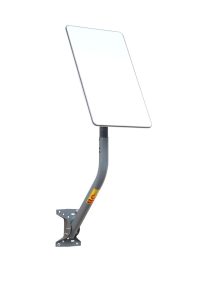MEO Satellites: Revolutionizing Global Connectivity with Medium Earth Orbit Technology
MEO satellites, or Medium Earth Orbit satellites, are a type of satellite that operates in an orbit between 2,000 and 36,000 kilometers above the Earth’s surface. This orbit is higher than Low Earth Orbit (LEO) satellites but lower than Geostationary Orbit (GEO) satellites. MEO satellites are gaining popularity due to their ability to provide faster and more reliable connections than traditional GEO satellites.
MEO satellites have several advantages over GEO satellites. One of the main benefits is their lower latency, which is the time it takes for a signal to travel from the Earth to the satellite and back. MEO satellites have a latency of around 20-30 milliseconds, compared to GEO satellites which have a latency of around 200-300 milliseconds. This makes MEO satellites ideal for applications that require real-time communication, such as video conferencing and online gaming.
How MEO Satellites Work
MEO satellites work by receiving and transmitting signals to and from Earth stations. They use a combination of antennas and transponders to receive and re-transmit signals, which are then sent back to Earth. MEO satellites are typically used for telecommunications, navigation, and Earth observation applications.
MEO satellites have a higher elevation angle than LEO satellites, which means they can see more of the Earth’s surface at any given time. This makes them ideal for applications that require global coverage, such as satellite navigation and telecommunications. MEO satellites also have a longer lifespan than LEO satellites, with some satellites lasting up to 15 years or more in orbit.
Applications of MEO Satellites
MEO satellites have a wide range of applications, including telecommunications, navigation, and Earth observation. They are used by governments, businesses, and individuals around the world to provide critical communications services, such as internet connectivity, voice and video communications, and data transfer.
MEO satellites are also used for navigation applications, such as GPS and other satellite-based navigation systems. They provide location information and timing signals to receivers on the ground, which use this information to determine their exact location and time.
Future of MEO Satellites
The future of MEO satellites looks promising, with several new constellations and systems being developed and launched in the coming years. One of the most notable developments is the launch of the O3b satellite constellation, which provides high-speed internet connectivity to underserved communities around the world.
Other companies, such as SES and Intelsat, are also launching new MEO satellite constellations, which will provide a range of services, including telecommunications, navigation, and Earth observation. These new constellations will offer faster and more reliable connections than traditional GEO satellites, and will help to bridge the digital divide between developed and developing countries.



